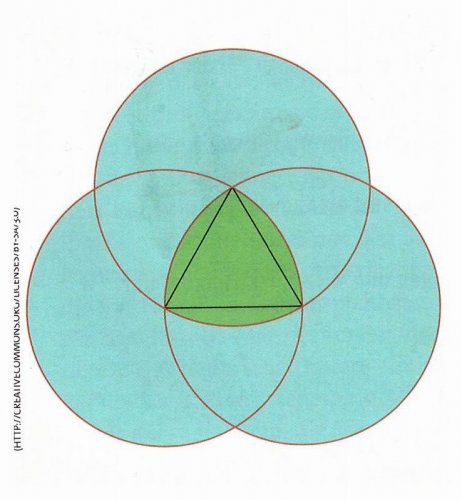- Joined
- 11 March 2006
- Messages
- 8,608
- Reaction score
- 3,058
Just imagine, you got the task to measure the thickness of a rod. You've got a suitable measuring instrument,
maybe a sliding caliper, but you cannot see the shape of the cross section of that rod. Your measurements give
always the same thickness, no matter of the angle you have turned the rod.
What conclusion you could draw with regards to the shape of the cross section ?
If you said something like "The cross section is circular", then ...welcome to the club !
I would have said the same before reading an article in "Spektrum der Wissenschaft", August 2013 issue.
Honestly I hadn't heard about the Reuleaux triangle before, probably I just was ill that day at school..
The way it can be constructed geometrically is show below (from the mentioned mag).
The connection to aerospace mentioned there is tragic indeed: What I didn't know, seems to have
been unknown to those, too, who were responsible for checking the SRB of the Space Shuttle. To check
for deformations, the thickness of the segments was measured. Same thickness on a number of measurements
meant the reuse of that segment.
On the 28th of January 1986 a seal in the SRB of the Challenger Space Shuttle, that had lost a lot of its flexibility
due to low temperatures didn't remain attached properly to a deformed segment, with the too well known consequences.
That a failure of a seal was the reason for the Challenger disaster can be read everywhere, but this more in-depth
explanation was new to me.
maybe a sliding caliper, but you cannot see the shape of the cross section of that rod. Your measurements give
always the same thickness, no matter of the angle you have turned the rod.
What conclusion you could draw with regards to the shape of the cross section ?
If you said something like "The cross section is circular", then ...welcome to the club !
I would have said the same before reading an article in "Spektrum der Wissenschaft", August 2013 issue.
Honestly I hadn't heard about the Reuleaux triangle before, probably I just was ill that day at school..
The way it can be constructed geometrically is show below (from the mentioned mag).
The connection to aerospace mentioned there is tragic indeed: What I didn't know, seems to have
been unknown to those, too, who were responsible for checking the SRB of the Space Shuttle. To check
for deformations, the thickness of the segments was measured. Same thickness on a number of measurements
meant the reuse of that segment.
On the 28th of January 1986 a seal in the SRB of the Challenger Space Shuttle, that had lost a lot of its flexibility
due to low temperatures didn't remain attached properly to a deformed segment, with the too well known consequences.
That a failure of a seal was the reason for the Challenger disaster can be read everywhere, but this more in-depth
explanation was new to me.


